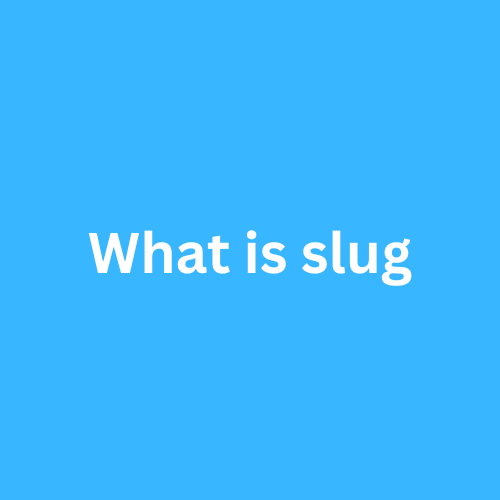
What is slug?
What is a Slug?
A slug is a user-friendly, readable part of a URL that identifies a specific page or post on a website. It’s typically derived from the title of the page or post and is designed to be descriptive and easy to understand.
For example, in the URL:
https://www.example.com/blog/10-tips-for-better-sleep
The slug is 10-tips-for-better-sleep.
What is a URL Slug?
A URL slug is the specific part of the URL that comes after the domain name and any subdirectories. It’s the portion of the URL that uniquely identifies the page or post.
For example:
https://www.example.com/blog/10-tips-for-better-sleep
-
Domain:
www.example.com -
Subdirectory:
/blog/ -
URL Slug:
10-tips-for-better-sleep
Why Are Slugs Important for SEO?
Slugs play a critical role in Search Engine Optimization (SEO). Here’s why:
-
Improves Readability for Users:
-
A clean, descriptive slug helps users understand what the page is about before they click on it. For example,
10-tips-for-better-sleepis more informative than a URL likepost1234.
-
-
Helps Search Engines Understand Content:
-
Search engines like Google use the slug to determine the topic and relevance of the page. A well-optimized slug with relevant keywords can improve your page’s ranking in search results.
-
-
Enhances Click-Through Rates (CTR):
-
A clear and concise slug makes your URL more appealing in search engine results, which can encourage users to click on your link.
-
-
Avoids Duplicate Content Issues:
-
Unique slugs help search engines distinguish between different pages on your site, reducing the risk of duplicate content penalties.
-
-
Supports Keyword Targeting:
-
Including relevant keywords in your slug can signal to search engines what your page is about, improving its chances of ranking for those keywords.
-
Best Practices for Creating SEO-Friendly Slugs
-
Keep It Short and Descriptive:
-
Use only the most important words from the page title.
-
Example: Instead of
how-to-make-the-best-chocolate-chip-cookies-ever, usebest-chocolate-chip-cookies.
-
-
Use Hyphens to Separate Words:
-
Hyphens (
-) are the standard for separating words in slugs. Avoid spaces, underscores (_), or special characters.
-
-
Include Target Keywords:
-
Incorporate relevant keywords that match the content of the page and what users might search for.
-
-
Avoid Stop Words:
-
Remove unnecessary words like “and,” “the,” “of,” etc., unless they are critical for readability.
-
-
Use Lowercase Letters:
-
URLs are case-sensitive, so stick to lowercase letters to avoid confusion.
-
-
Avoid Dynamic Parameters:
-
Use static, readable slugs instead of dynamic ones with parameters (e.g.,
?id=123).
-
Example of a Good vs. Bad Slug
-
Good Slug:
https://www.example.com/blog/seo-tips-for-beginners
(Clear, concise, and includes keywords.) -
Bad Slug:
https://www.example.com/blog/post1234?id=5678
(Unreadable, not descriptive, and lacks keywords.)
How to Edit Slugs in CMS Platforms
Most Content Management Systems (CMS) like WordPress automatically generate slugs from the title, but you can manually edit them:
-
In WordPress: Edit the “Permalink” under the post title.
-
In Shopify: Edit the “URL and handle” in the product or page settings.
-
In Wix: Edit the “URL slug” in the page settings.
Conclusion
Slugs are a small but powerful part of your website’s URL structure. They improve user experience, enhance SEO, and make your content more discoverable. By creating clean, keyword-rich slugs, you can boost your website’s visibility and rankings in search engines.


